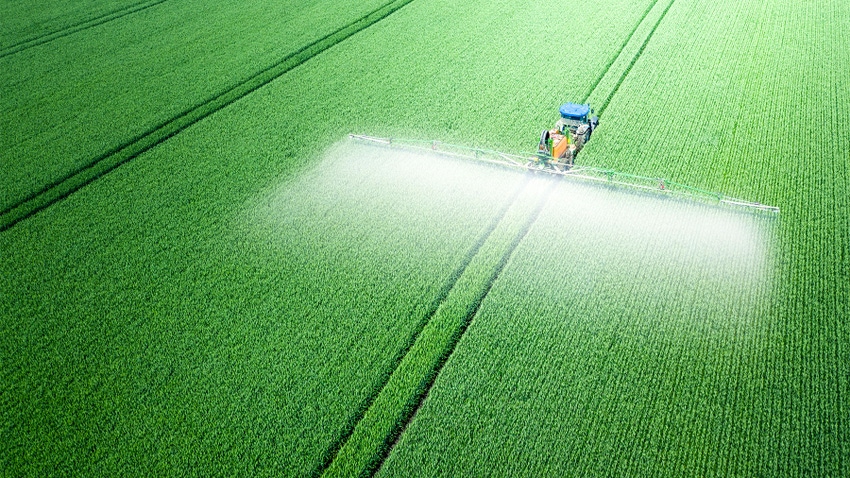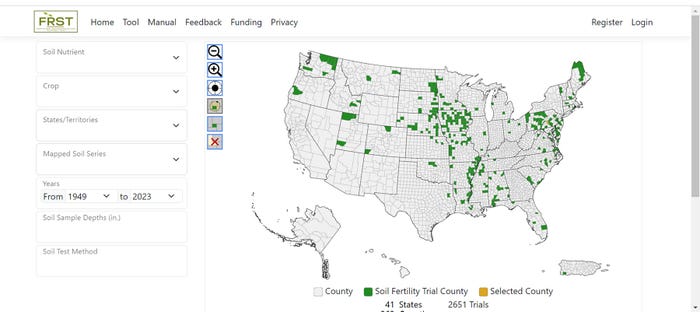April 26, 2024

A team of agricultural scientists, including researchers at Penn State, have launched a decision aid that provides an unbiased, science-based interpretation of soil-test phosphorus and potassium values for crop fertilization.
The Fertilizer Recommendation Support Tool, or FRST, represents a significant step in soil testing for phosphorus and potassium, according to the researchers. Using data from across the country, the tool is designed to enhance nutrient management with an eye toward potentially saving farmers millions of dollars while reducing excess nutrient losses to the environment.
The new web-based tool is the result of collaboration among more than 100 soil science and agronomic professionals representing nearly 50 universities, four divisions of USDA, several nonprofit organizations and one private-sector partner.

“We are very excited about the launch of the decision-support tool,” says John Spargo, associate research professor and director of Penn State’s Agricultural Analytical Services Laboratory. “It has the potential to significantly improve our ability to evaluate soil-test correlation and determine fertilizer nutrient needs at a time when getting that right is more important than it ever has been.”
Deanna Osmond, soil science researcher at North Carolina State University, notes that until now, soil fertility faculty in each state worked independently.
“But for farmers who work across state lines, it’s difficult to compare or assimilate multistate guidelines,” Osmond says. “Our goal is to improve the accuracy of nutrient recommendations through independent, scientifically developed nutrient management best practices that farmers can believe in and adopt.”
What does it do?
The tool provides critical phosphorus and potassium soil-test values, indicating where there is no expected yield increase from phosphorus or potassium fertilizer application. In the next phase of the project, the tool will provide research-based phosphorus or potassium rate response information to assist farmers in selecting minimum fertilizer rate expected to produce maximal crop yield.
The current version includes data from nearly 2,500 phosphorus and potassium trials for 21 major agricultural crops, mostly corn and soybeans. The tool includes a map of the U.S. that shows the location of phosphorus and potassium trials represented in the database. This map can be used to identify where the need for additional research data is greatest.
The database was constructed from both historical and current research data, and includes trials from 40 states and Puerto Rico. The team plans to expand to other crops, cropping systems and nutrients, such as sulfur.
Here’s some key features of FRST:
Data-driven. FRST utilizes a database of soil-test correlation data that is constantly updated to improve testing confidence.
Crop-specific. The database covers 21 major commodity crops.
Geographically diverse. Includes published and unpublished trial data from 40 states and Puerto Rico.
Unbiased. Blended data removes political and institutional bias in soil-test interpretation.
Scientifically sound. Data represents a minimum dataset that provides reliable outcomes.
Nathan Slaton, soil science researcher at the University of Arkansas and a leader on the project, explains that the FRST project has accomplished two important objectives to advance phosphorus and potassium management for crop production.
“The first objective was developing a national database to archive soil-test correlation and calibration research, ensuring that research information that supports crop fertilization recommendations is not lost as scientists retire,” Slaton says. “The second is providing a tool that anyone can use to review the research results relevant to their crops, soils and geographic area to check their soil-test-based fertilizer recommendations.”
For more information about FRST and how it can transform nutrient management for farms and organizations, visit soiltestfrst.org and select “Tool.”
The USDA Natural Resources Conservation Service, USDA Agricultural Research Service, USDA National Institute of Food and Agriculture, and OCP North America have provided funding for this project.
Source: Penn State University
You May Also Like




